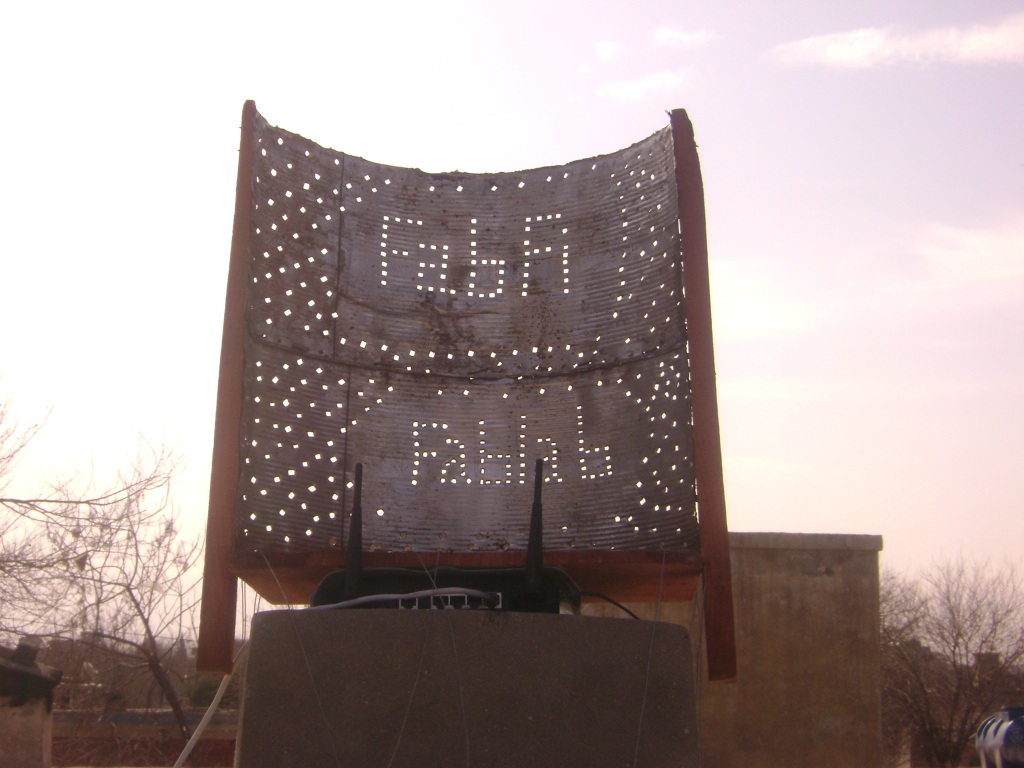AI isn’t coming. It’s already at your desk. And if you’re South African, chances are you’re ready to hit the ground running. A brand-new…
FabFi does fabulous things in Afghanistan and Kenya

Something interesting is happening in Afghanistan. It’s also happening in Kenya. I think that it is proof that it is possible to open the Internet to every developing country in the world. Back in December 2008, a group of individuals in Jalalabad, Afghanistan started working on a project to bring high-speed internet to a village, hospital, university, and an NGO in the city.
The group was known as FabLab Jalalabad and they modelled their project on a system which was designed to track sheep in Norway. The remarkable thing about this project was that they were designing an incredibly low-cost wifi system that could work over incredibly large distances and which would remain stable in heavy rain, dense smog and through forested areas.

Two years on, FabFi in Jalalabad is up and running and working very well. In fact, the FabLab team in Jalalabad open-sourced all of the technology while they worked on it, and now a similar network is up and running in Kenya, and a group in the United States is working on building a similar network.
It is useful to keep in mind that, back in 2008, Afghanistan was not exactly the place you would most expect to discover such technological innovation. Earlier in the year, a report from the United Nations stated that “About 2.55 million people are estimated to be critically food insecure and vulnerable to malnutrition. Natural disasters like drought, flood, and snow fall during winter are very common and disrupt access to food markets”. Another UN paper reported that “worsening security conditions have substantially diminished the enjoyment of human rights, including the right to life and safety, freedom of movement, access to education and health, and access to livelihoods by communities in insurgency affected areas.”
In many ways, FabFi can be seen as a valiant attempt to overcome many of these huge obstacles in an effort to bring the resources available on the Internet to people in desperate need. It is this spirit that encouraged the Fablab Jalalabad team to keep the technology open to the public. Indeed, community members who used the FabFi network received training and experience with the system for a month, after which they were given control and maintenance of it. In a short space of time, many locations began to join the initial nodes, which helped to expand the network. Jalalabad now has 45 remote FabFi nodes. The longest link in the network, was one of the first and covers a distance of 6km.
Nobody needs permission to add a node to the network. You simply build the node equipment and point it in the right direction. What is even more astounding is that building an endpoint node can cost as little as $60 and all of the materials can be sourced locally.
In fact, after the initial nodes were designed and built, local network users began designing and building their own reflectors out of locally sourced scrap materials, with a total cost of less the $3, so that the biggest cost for a node ends up being the WiFi router. Once connected, you can expect your data throughput to be about 11Mbps. That may not be incredibly fast by most standards, but considering the distances covered using only WiFi links, it’s a remarkable achievement.
A group in Kenya has been replicating the technology and now has 50 remote nodes deployed across three independent sites, with the longest link traversing 3.5km. A connection that hops through 6 of the nodes to connect to the Internet gets data throughput of over 30Mbps. The JoinAfrica group wanted to demonstrate that individuals and local communities could sustainably build, operate and monetise broadband networks on a large scale.
Their system includes user accounting and management utilities, so that users added to the service help to fund its growth and pay the operators for their labour. But it’s not all about money; the JoinAfrica system uses excess paid capacity to provide limited free connectivity as a public service in line with its ‘universal access’ principle.
With all of the code and design available to build FabFi mesh networks I think that this technology is likely to grow quickly and will help people in rural or technically impoverished areas to gain access to the Internet. While some may point out that there are more fundamental problems that need to be solved in many of these areas, I believe that FabFi is a great introduction of open-source innovation to the communities that need it most, and access to the Internet opens up a whole gateway of possibility to improve and enrich these areas using similar open-source technologies.
It would be amazing to see communities in developing countries making use of projects like Open Source Ecology to build everything from Well-drilling rigs to Tractors.
Image courtesy of: scripts.mit.edu
